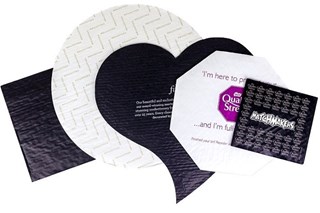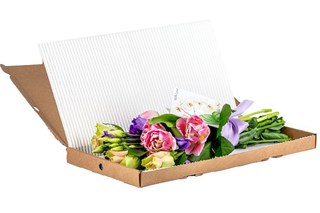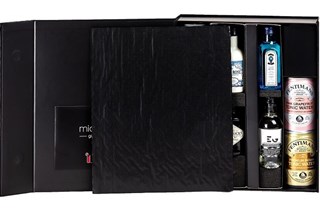Plastic to Paper: The Eco-Packaging Revolution
Between Greta Thunberg’s school strikes for climate, the ban on microbeads in cosmetics, and national icon David Attenborough’s beautifully evocative Blue Planet series, the UK has been edging towards a more renewable future for years.
Young people seem to be at the forefront of this change, often answering survey questions in favour of increasingly eco-friendly laws.
But consumers in general are becoming more sustainable: a YouGov survey concluded that a huge 69% of respondents thought that companies should be required by law to create environmentally-friendly packaging - even if it meant them paying more for the goods.
Meanwhile, the same survey found that 46% of people actually feel guilty about the amount of plastic they currently buy.
And while on the whole the nation has focused on plastic bags and vegetables wrapped in unnecessary layers, another industry has been taking note: confectionery.
Challenges & solutions
That isn’t to say it’s an easy switch for those selling sweets: there are all sorts of problems involved in making the switch from plastic packaging to paper.
Like any food packaging, it has to be free from contaminants, and sturdy enough to not allow outside sources to spoil the products inside.
There is, of course, hope on the horizon - brands just have to be a little more creative! And what’s more, this global switch from plastic to paper opens up some interesting new packaging possibilities.
Product quality
For foodstuff like chocolates and biscuits, the packaging has to ensure the product doesn’t melt or leave a greasy residue seeping through to the outside of the packaging.
More importantly, paper has to prove to be as good as plastic in preventing contamination - especially in times where we’re especially conscious of it.
Similarly, moisture cannot reach the food - almost all confectionery is vulnerable to it, and nobody wants to open a packet of sticky, melted mess.
One solution for this is to use an interior coating of some sort - but then you have the problem of ensuring that the coating is as recyclable as the paper itself, and doesn’t hinder or negate the efforts made to use paper packaging in the first place.
Another area of change is confectionery brands swapping traditional shrink wrap plastics for paper glassine cushion pads, which add a layer of protection in between product and outer layer.
These protect the paper outside from the sweets inside and prevent moisture from spoiling the food. Additionally, any effects of bumps in transit are minimized by the cushion – so your product is more likely to arrive in top shape. No crushed truffles for your customers!

Trust, brand loyalty, and luxury
It’s a risk that consumers just won’t trust that confectionery packaged in paper will be as safe as that packaged in plastic.
However, given the effects of customer loyalty, it’s likely that they’ll at least try the new packaging - hopefully to find it has no detrimental effects on their favourite chocolate bar.
Besides which, some brands have been pioneering paper packaging for years, like Tony’s Chocolonely.
This might actually work to the advantage of brands late to the game. Typically, it’s smaller businesses with higher-end offerings that have had the higher prices and therefore the profit margin to find and use sustainable packaging options.
By switching to paper packaging and thus inviting comparison with these high-quality brands - though generally at a lower price point - brands might well benefit from the association.
Additionally, extra touches like bespoke cushion pads let customers know that your brand quality hasn’t decreased. If anything, cushion pads enhance that luxury image a little more: they’re an extra layer to unbox, adding to the excitement.
Appearance & branding
Finally, there’s the fact that paper packaging just won’t look the same: printing quality may even be reduced, leading to difficulties showcasing ingredients and nutritional facts.
Appearance-wise, the packaging industry comes into its own. Yes, the products might look a little different, but that might not be a bad thing at all.
It’s possible for paper to mimic the gloss of plastic - but on the other hand a matte finish will tell customers immediately that something has changed, demonstrating the brand’s ethos without them having to say a word.
In terms of printing quality and making writing legible, changes might have to be made. Font size could be made incrementally larger, perhaps removing unnecessary words or putting them in a different place. A mixed confectionery box might swap lengthy chocolate descriptions from the outer layer for a custom cushion pad inside the box.
This would not only give the brand more room to play around with design and a chance to promote their brand further but also offer more protection for the food inside, shielding it from dents and blows.
Having swapped to paper packaging, the relative fragility compared to plastic is an important factor to consider and compensate for. No wonder cushion pads are becoming more popular again!
Some brands, like Smarties so many years ago, might have to give up iconic packaging: their round tubes, complete with plastic lids, will be fondly remembered by many. The new iteration still has an integral lid that you can open with one hand and which is the perfect vehicle for the famous letters on the underside of the lids. Some things never change!
If you would like to discuss your paper packaging needs for confectionery products, such as single face corrugate or cushion pads please contact us using the form below.
Sources: YouGov statistics



